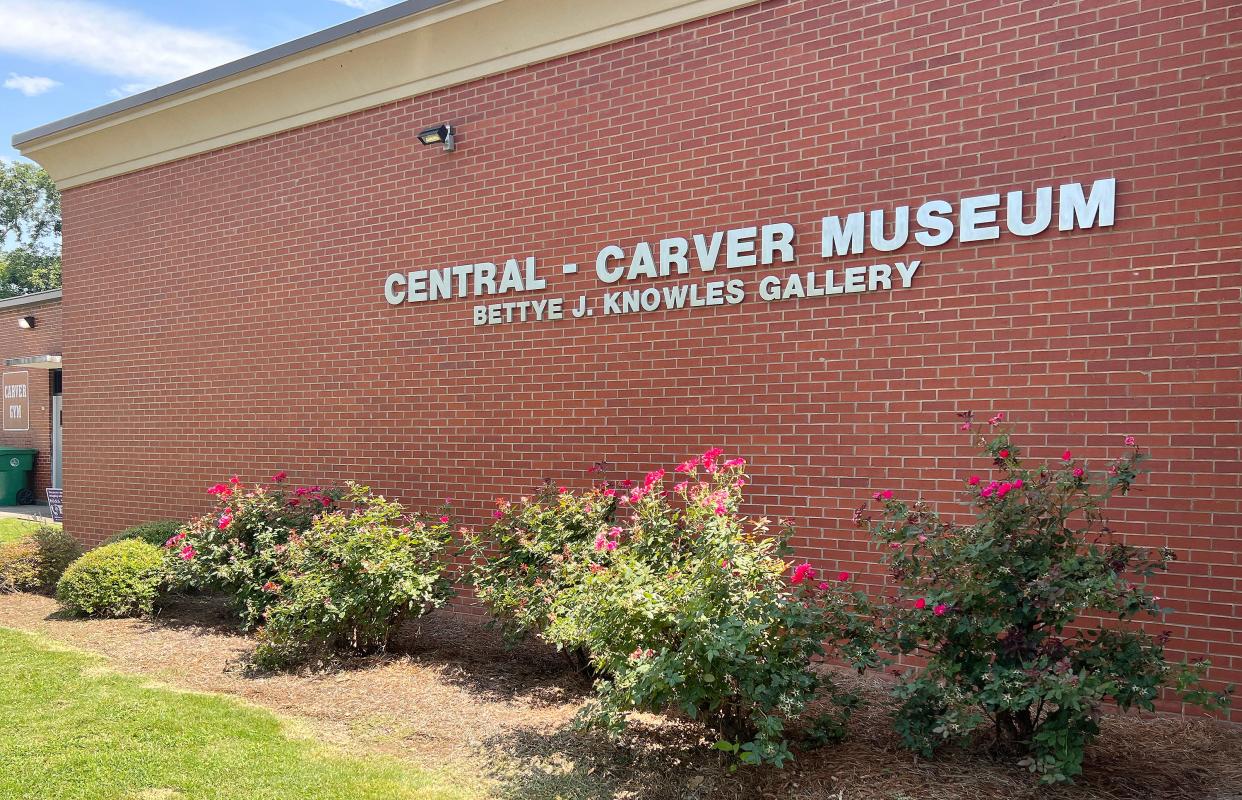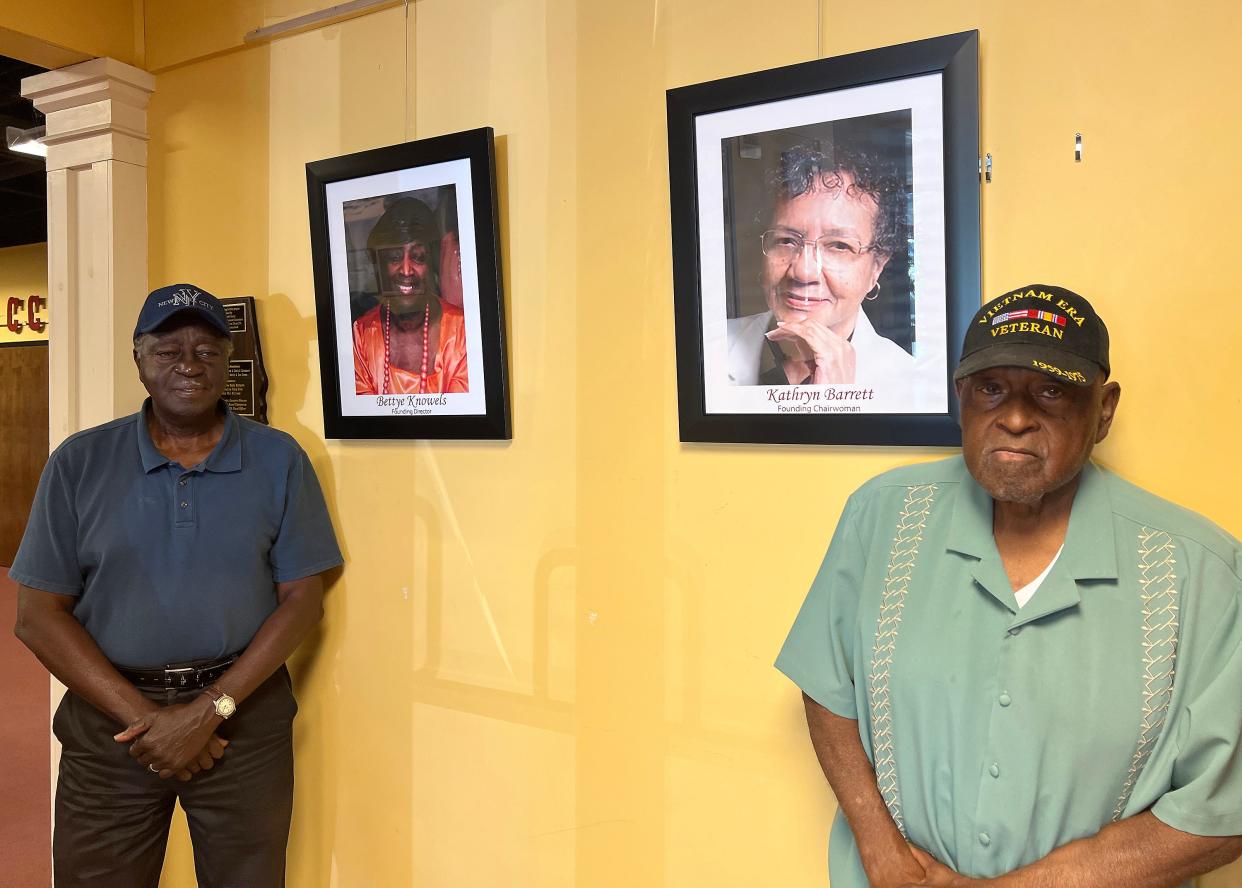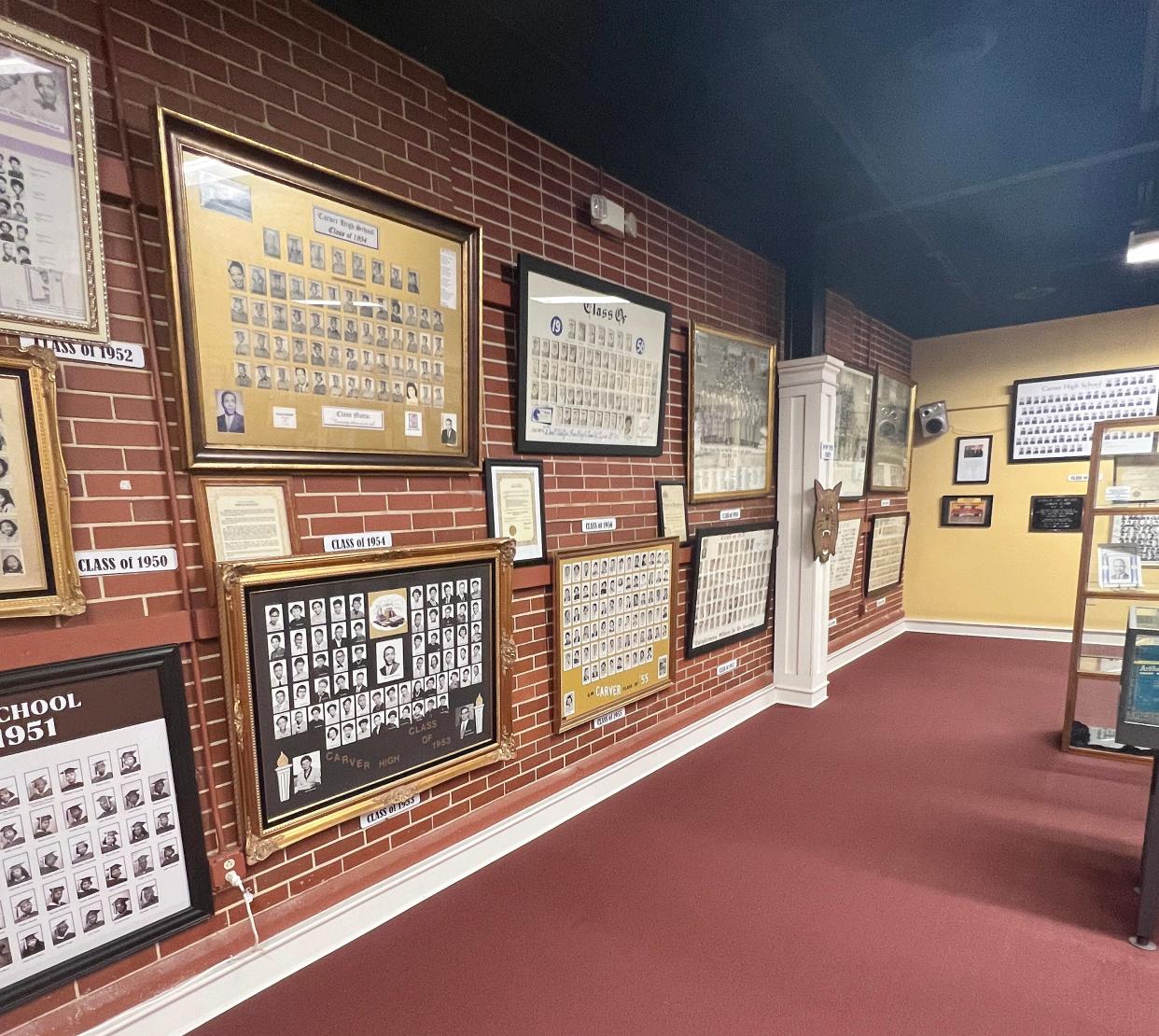Carver High School's history, legacy documented and preserved at Central-Carver Museum
The history of Carver High School is ever-present in the memories of those who knew it, 52 years after its final class graduated and 46 years after the building was torn down.
Since 2006, mementos of that history — and tributes to the individuals it produced — have been displayed at the Central-Carver Museum at 1030 Tuscaloosa Ave., adjacent to the Carver Community Center at Carver Square (where the school stood).
There are graduating class photos, a band uniform, a coach’s jacket, athletic trophies, diplomas and yearbooks. There are newspaper clippings documenting memorable events and personalities.

There’s a section memorializing Carver graduates who served in the armed forces and didn’t make it home from wartime.
And there are countless photos: A large one of the campus, collections that show everyday life at the school and honor rolls of the Carver graduates who gained success and prominence in academics, athletics, business, religion, science and the legal and medical professions.
Everyone is welcome to check them out and learn, according to Claude Burnett, Class of 1961, chairman of the board of the Central-Carver Foundation.
“We invite everyone to come,” Burnett said, “and when you come, we want you to come with an open mind. We also want you to ask questions. We tell people all the time that there are no stupid questions, and there are no questions that you need to be anxious about asking.
“But you need to be prepared to get the truth,” he said.
Carver’s history
The facts: Carver High School opened in 1936, replacing predecessor Central High School, and was Gadsden’s first 12-year school for Black students. (More than 1,000 students were there when the doors opened.)
The building was constructed with New Deal Public Works Administration funds and had 26 classrooms, an auditorium and a lunchroom. An elementary school section for grades 1-6 opened in 1953, and a band room, gym and shop were added later in the decade. A new lunchroom and a home economics department and a junior high wing were constructed in the 1960s.

However, the high school closed in 1971, the result of one of the primary goals of the civil rights movement: integration. Carver housed an elementary school from 1975 to 1977 — with a mostly white enrollment, according to Burnett — but the main building was torn down in December 1977.
“The question is always asked, ‘why Carver closed,’ and we tell the truth,” Burnett said. “We don’t try to sensationalize it, we tell it how it is, and we show them in there (museum) what happened.
“Carver was an elementary school, and they were redistricting and students off the mountain would have to come there,” he said, “And we understand the powers-that-be didn’t want that to happen, they wanted to close Carver, and the rest was history.”
The museum’s origin
The museum’s origin stems from a Black History Month exhibit in 2003 at Gadsden State Community College. Victor Ficker, the college’s president at the time, provided Bettye Knowles, the museum’s founding director, with a space to set it up. The exhibit moved to the Gadsden Senior Activity Center afterward, then into the present site.
“Mayor (Steve) Means and President Ficker were looking for a place to give us space, and that’s how it started,” Burnett said.
He said the relationship with the city has remained strong through three mayoral administrations.
“None of them have asked us for anything, or asked who we voted for or who we support,” Burnett said. “They have been very supportive of this museum.”
The facility was in the news recently with the announcement of a plan by the city and the Gadsden Museum of Art to place two monuments there bearing the names of the students who were juniors at the time the high school closed and would’ve made up Carver's Class of 1972.
Those students were given a choice of going to Gadsden or Emma Sansom, the city’s two high schools at that time, for their senior year.
Burnett said despite some criticism he’s received to the contrary, that idea for the monuments didn’t originate with the museum, which is “standing on the sidelines,” but with Ruth Moffatt, Gadsden’s director of equity, inclusion and diversity.
Moffatt said at a recent meeting of the city’s Human Relations Council that she saw it as an initial step in trying to claim Gadsden’s proper place in the history of the civil rights movement.
She met with Burnett at the museum to learn about Carver’s history, and he said when she found out about the class that didn’t get to graduate, “She started talking about how we needed to do something about that.”
He put her in touch with members of that class. “They had a meeting and talked about what she wanted to do,” he said, “and they were in agreement.”
The museum has a good working relationship with the Gadsden Museum of Art and is a member of the Museum Association of Alabama.
“We try to present ourselves in such a way that we build goodwill throughout the state and nation,” Burnett said. “We want everybody to feel welcome to come here and learn about Carver High School and the contributions its alumni have made throughout the country.”
High standards
More importantly, it continues to follow the standards set by Knowles, who died in 2017, and Kathryn Barrett, the founding chairwoman, who died in 2019.
"They stressed for it to be about education,” Burnett said, “to let people know the value of Carver High in the history of Gadsden. We are entwined in the city’s history; you can’t separate us from it. Great things happened and great people came out of Carver, but it was never publicized.”
Many of those graduates are familiar. For example, James Hood, Class of 1961, was one of the first Black students to integrate the University of Alabama, and is prominently cited in museum displays, including the Ph.D. he received in 1997 from the university.
But Burnett mentioned other names that may be less familiar because they gained fame elsewhere, like artist/sculptor Nathaniel “Sonny” Bustion and scientist Curtis Ross, who led a team that is credited with saving Lake Erie from devastating pollutants in the late 1960s. (There’s a special tribute to him.)
“Some well-known people came out of Carver that a lot of people, both Black and white, don’t know about because they haven’t come to the museum,” Burnett said. “A lot of people that left Carver went different ways and did well and represented the school and the City of Gadsden well.”
The museum isn’t standing still in 2023. There are plans to upgrade the lighting in ways that won’t damage the exhibits, and Burnett said they’re getting assistance in applying for grant funds.
“We’re also going to redo some things in the museum,” he said. “We’re looking at highlighting some of our local people, like (Coach) George Baker, and some work from local artists.”
Burnett said Knowles and Barrett also stressed “you can’t see the future by looking back,” and his own philosophy is that a good plan is essential to making progress.

He said the founders also stressed the need to have people who love Carver and prioritize the museum’s interests, not their own, and don’t try to dominate things on the facility's board of directors. (There’s also an advisory committee.)
“This board is harmonious,” Burnett said. “We might not agree, but we disagree agreeably, and at the end of the day it’s about the best interests of the museum and the foundation, not individuals. We’re here for the museum, not to look for anything that highlights ourselves.”
When to visit
The museum is currently open from 11 a.m. to 3:30 p.m. Tuesday through Thursday, although there are phone numbers on the door for after-hours visitors to call to be let in “anytime you want to come,” Burnett said, adding, “We had a church come one weekend.”
There’s no admission charge, but the facility is staffed by volunteers and supported by donations.
Call 256-549-4742 or visit https://centralcarver.org for more information.
This article originally appeared on The Gadsden Times: Gadsden's Central-Carver Museum full of history


